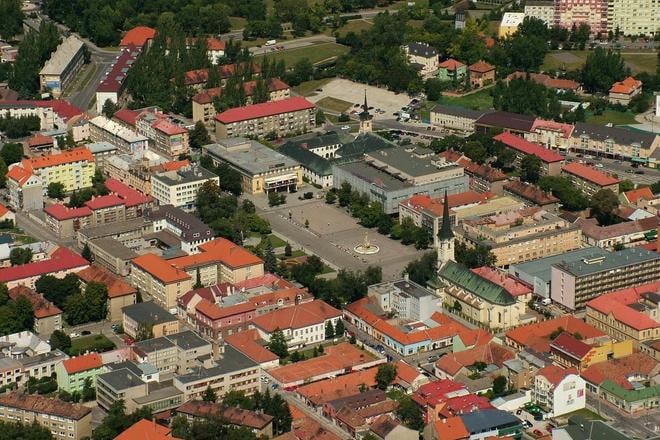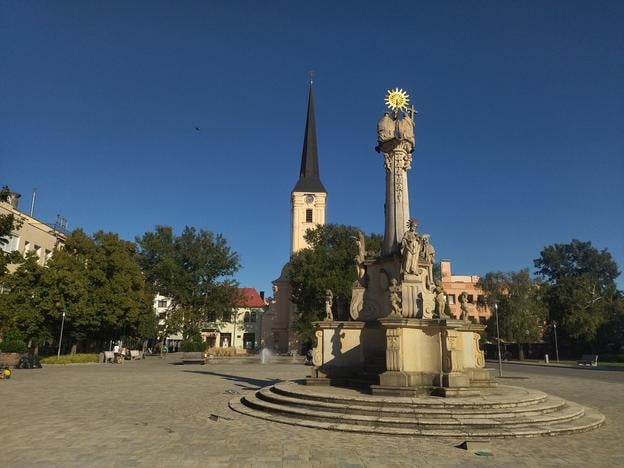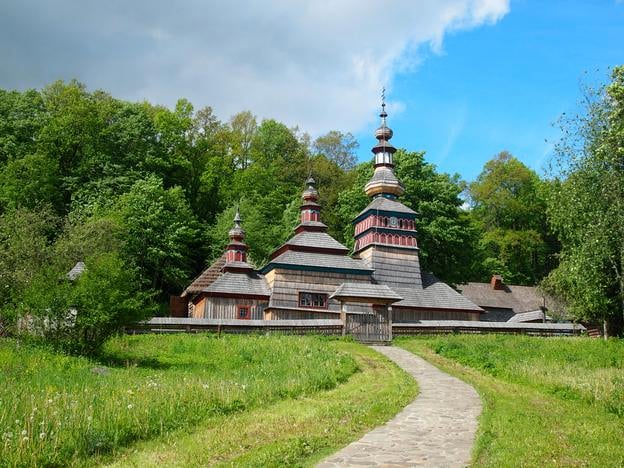You can read this exclusive content thanks to the FALATH & PARTNERS law firm, which assists American people with Slovak roots in obtaining Slovak citizenship and reconnecting them with the land of their ancestors.
Nové Zámky — or ‘New Castles’ in English — is a historic town that once served as an anti-Turkish fortress. Its strategic position as a railway junction, however, made it a target during the Second World War, leading to devastating destruction. In March 1945, near the war’s end, American forces heavily bombed the town.
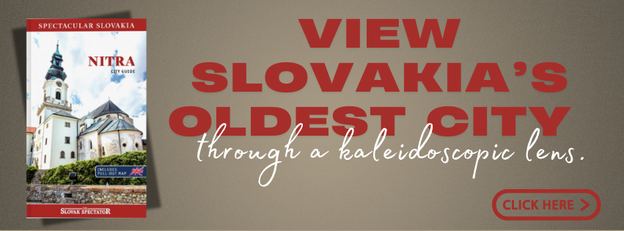
Only a third of its buildings remained standing after the raids. Nearly all of its historic landmarks, including the town hall and the archbishop’s palace, were lost. Just two churches and a Franciscan monastery survived the devastation.
The damage to the historic centre did not end with the war. During four decades of communist rule in Czechoslovakia, many surviving structures were demolished rather than restored. In their place rose modern constructions, often austere and lacking the character and tradition of what had been destroyed.
For more on the region, see our Nitra city guide.
Nové Zámky’s fragments of memory
History enthusiasts will find a number of intriguing buildings and sites scattered across Nové Zámky. A suggested route for exploring the monuments of this southern Slovak town was provided by Pavol Rusnák, a historian at the Ján Thain Museum.
For those arriving by train or bus, the Ján Thain Museum is within easy reach. Founded by a secondary school professor of the same name, the museum houses permanent exhibitions on the city’s history, ethnology and archaeology. It also features memorial rooms dedicated to Anton Bernolák, a Slovak linguist and nationalist, and Gergely Czuczor, a Hungarian writer and poet. Both men are closely linked to the city’s ethnically diverse past.
“In the courtyard of the museum, you can see Roman tombstones in the lapidary, which were discovered built into the wall of a former mill,” Rusnák notes.
From the museum, the path towards the city centre passes the former Sokolovňa building, fronted by an artesian well.
“It is the oldest among several operational wells in the city,” the historian explains. The building once served the Sokol patriotic and physical education association during the First Czechoslovak Republic. Today, a pub of the same name stands nearby.
A helping hand in the heart of Europe: a travel guide to Slovakia.
At the crossroads leading into the centre, the modest chapel of St Anne comes into view. It is one of several surviving sacred buildings scattered across Nové Zámky, most of them erected on the sites of former cemeteries.
The synagogue still stands
Along M. R. Štefánik Street rises a 19th-century grammar school, its façade recalling the educational ambitions of a bygone era. In front, a panel exhibition presents archival photographs of Nové Zámky, offering a glimpse into the city as it once was.
Opposite the school, in a nearby park, lie the remains of Fogda’s Bastion. Despite its name, it bears no relation to the former fortress; instead, it is a fragment of old garden architecture, quietly preserved.
In the pedestrian zone of the city centre, discreet ground markers draw attention to milestones in Nové Zámky’s history, inscribed in three languages — a subtle reminder of its cultural diversity.
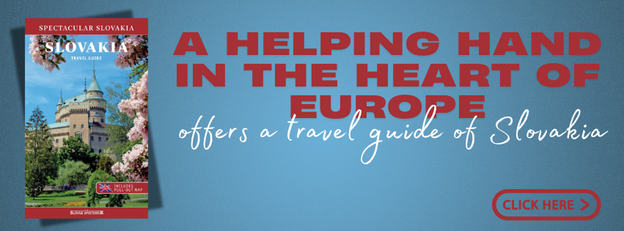
Just before reaching the Main Square, a restored synagogue stands in dignity. Still used for religious ceremonies, it is one of the city’s most striking symbols of continuity.
Close to the centre, the ornate gate of the Calvary appears. Built on the site of a bastion of the anti-Turkish fortress, it speaks to the city’s 16th-century role as a bulwark against the Ottoman Empire.
Beyond the gate, a passage leads to the Imperial and Royal Riding Hall, recognised as a technical monument for its unique roof structure. Partially restored, with other sections still awaiting repair, it reflects the city’s ongoing efforts to reclaim and preserve its architectural past.
Churches and the execution site
Near the Main Square stands one of the city’s oldest preserved buildings — the secondary vocational school, which once served as the grammar school.
On the square itself rises a striking Catholic church, its tall tower dominating the skyline. At its side, a sculptural group depicts the Holy Trinity, a landmark familiar to generations of townspeople. A short distance away, the Franciscan monastery adds another layer of sacred architecture to the city centre.
View Slovakia’s oldest city through a kaleidoscopic lens with our Nitra city guide.
Beyond the square, Nové Zámky is dotted with smaller chapels as well as a Calvinist church, all of which can be visited within an hour’s walk.
“Be sure to look down so you don’t miss the castle well and the memorial plaque commemorating the execution of Ladislav Očkaj,” historian Pavol Rusnák advises. Očkaj, a Hungarian nobleman who betrayed the Habsburg rebels, was put to death at the former execution ground marked by the plaque.
Leaving the square in the direction of Bernolák Park, the Holy Trinity Chapel appears at the roundabout. It is here that Anton Bernolák, the Slovak linguist, was laid to rest.
For art enthusiasts, the Ernest Zmeták Art Gallery is a highlight. Named after the Nové Zámky-born painter and academic, the gallery presents changing exhibitions and cultural programmes close to the city centre.
After immersing in history and culture, visitors may find respite at the local swimming pool or in Berek Forest Park, a riverside green space along the Nitra. The park features a mini zoo for children and an educational trail. At the river’s dead end, beyond the cascades, lies Zúgov, a protected natural area offering a quieter encounter with the region’s landscape. Sihoť is another popular park, especially well suited for sports enthusiasts.
What to see in and around Nové Zámky
Discover part of Western Slovakia with our Nitra travel guide.
Ján Thain Museum: Exhibitions on the history of Nové Zámky and its surroundings.
Former Sokolovňa building: Fronted by an artesian well.
The chapel of St Anne: It is one of the oldest preserved monuments.
Jewish Synagogue: Still in use today for religious ceremonies.
Ernest Zmeták Art Gallery: A cultural centre offering diverse artistic experiences.
The Holy Trinity Monument: Built in 1749 in gratitude for the end of the plague.
Chapel of the Holy Trinity: Where Anton Bernolák is buried.
Berek Forest Park: A natural forest recreation area next to the Nitra River.
Hunting Manor in Palárikovo: A national cultural monument that provides accommodation and is also suitable for weddings and family celebrations.
Chateau Rubáň: A manor with both accommodation and a winery.
Kasnyik Organic Winery: A winery offering organic wines and accommodation.
Chateau Belá: A hotel combined with a winery.
Municipal Museum in Šurany: Located in a former synagogue, specialising in the history of sugar production.
Calvary in Dvory nad Žitavou: A 19th-century site set amid flat fields on a small hill.
House of Folk Traditions and Archaeological Museum, Svodín: Preserving local heritage and archaeological finds.
Mária Čelaď: Ruins of the Pauline Monastery and the Nearby Chapel of the Virgin Mar near the village of Veľké Lovce.
Pilgrimage Site, Pozba: A tranquil spot for religious reflection and meditation.
Rotunda in Bíňa: A 13th-century Romanesque building, among the oldest in Slovakia.
Thermal Swimming Pool Podhájska: Popular with pensioners and families with children.
Thermal Swimming Pool Vadaš, Štúrovo: A well-known recreational destination on the Danube.
Spectacular Slovakia travel guide
A helping hand in the heart of Europe thanks to our Slovakia travel guide with more than 1,000 photos and hundred of tourist spots.
Our detailed travel guide to the Tatras introduces you to the whole region around the Tatra mountains, including attractions on the Polish side.
Lost in Bratislava? Impossible with our City Guide!
See some selected travel articles, podcasts, and traveller info as well as other guides dedicated to Nitra, Trenčín Region, Trnava Region and Žilina Region.


